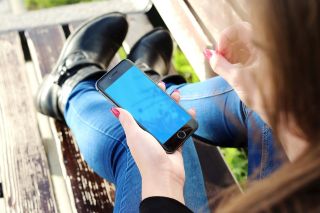

In the spring of 2023, the United States Surgeon General released an advisory based on growing evidence that social media use is harming young people’s mental health. Is this social technology compromising our children’s mental wellbeing? According to the 2023 Surgeon General’s report, frequent social media use by teens changes their developing brains to negatively impact functions such as attention, impulse control, self-esteem, emotional learning, and mood regulation.
Social media offers some benefits for youngsters as both an educational tool, and as shared identity and socialization platforms. However, excess social media use can be detrimental to young people’s mental health, leading to problems such as compulsive internet use, sleep disruption, increased stress, and other problems. The Anne E. Casey foundation reported the following as key drivers of adolescent social media usage:
• Desire to connect with others.
• Fear of missing out (FOMO).
• Giving in to social pressure.
• Feelings of stress, anxiety, or boredom.
Given these drivers, social media use is quite pervasive in the lives of most teens, with about 95% of 13- to 17-year-olds reporting daily social media engagements. Many platforms try to limit users to those at least 13 years of age, but surveys suggest that nearly 40% of younger 8 to 12-year-olds are using social media. Children on social media sites for more than 3 hours per day face increased risk of mental health problems.(1)
Why should using social media pose a risk for children's and teens' wellness? Research suggests that increased digital screen time is correlated with problems; from sleep disruption to increased stress, and from body dysmorphias to dampened mood regulation.(2) What’s going on in teens' brains?
One possible explanation may come from neuroscience research showing that young brains grow best when experiencing real world environments, and not virtual reality. Research pioneered by Donald Hebb (1949) compared animals reared in “complex environments“ – cages containing a variety of toys, objects, or playmates – versus animals reared in empty cages labeled as “impoverished environments.” Animals reared in more complex settings generally developed larger brains than animals from impoverished backgrounds. Many studies have since confirmed that more complex, enriched environments help developing brains grow more neural connections.(3)
Isn’t web-surfing and scrolling social media a sufficiently rich and complex form of social stimulation? Apparently not. According to some experts, use of digital 2-dimensional screens and social media apps represents a more passive and “impoverished” form of social stimulation, compared with real-world socializing. Children’s over-use of social media and digital apps may inhibit their normal brain development, compared with kids playing outdoors, engaging in sports, and interacting with other children in the real, non-virtual world. In the bubble of social media young people may not be fully exercising their brains for optimal development. The impact on young minds could make some teens more vulnerable to stress, anxiety, and other mental health issues.(4)
Another possible direct and harmful effect on young social media users may be caused by the light that enters their eyes from their digital screens. Light influences our brains to release hormones signaling daylight. Too much blue screen light shining into the eyes at night may disrupt natural circadian rhythms and sleep cycles. The critical relationship between sufficient sleep and mental health is well known.(5) Therefore, the American Academy of Child and Adolescent Psychiatry in 2024 recommended these screen time guidelines. The answer may be in becoming more aware of the amount of time we view digital screens, and of placing limits on absorbing screen-light at night. These are good ideas especially for children and teens whose brains are still developing.
As social media continues to grow in popularity, additional research is needed on the specific impact of social media and screen time on the developing adolescent’s brain and their mental health. Parents and teens can learn to be mindful about the time spent checking social media, and to be aware when screen-time interferes with or limits other activities. Consider taking regular breaks, and setting up times to unplug from the internet and social media. Instead, try to schedule and experience daily playtime in the real, non-virtual world.
Vogel, E. A., Rose, J. P., Roberts, L. R., & Eckles, K. (2014). Social comparison, social media, and self-esteem. Psychology of Popular Media Culture, 3(4), 206–222. https://doi.org/10.1037/ppm0000047
(2) Keneisha Sinclair-McBride & Michael Rich (2023). Social adolescents, social media, and social emotional development. Lancet, VOLUME 7, ISSUE 10, 673-675. DOI:https://doi.org/10.1016/S2352-4642(23)00177-3
(3) Hebb D. O. (1949). The Organisation of Behaviour. New York, NY: John Wiley & Sons.
(4) Bickham, D., Hunt, E., Bediou, B., Tsappis, M., & Rich, M. (2023). Environmental and behavioral patterns in patients with problematic interactive media use. Journal of Adolescent Health 72(3), S34. https://doi.org/10.1016/j.jadohealth.2022.11.075
(5) Gregory AM, Sadeh A. (2012). Sleep, emotional and behavioral difficulties in children and adolescents. Sleep Med Rev. 2012;16:129–36. doi: 10.1016/j.smrv.2011.03.007.
Carskadon MA. (2011) Sleep in adolescents: the perfect storm. Pediatric Clin North Am. 2011;58:637–47. doi: 10.1016/j.pcl.2011.03.003.